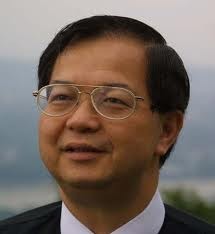- unknown (b.)
Bio/Description
An American computer scientist and Professor of Computer Science at Louisiana State University, who is known for the development of Entity-Relationship Modeling in 1976. Born in Taichung, Taiwan, he received a B.S. in electrical engineering in 1968 at the National Taiwan University, and a Ph.D. in computer science/applied mathematics at the Harvard University in 1973. From 1974 to 1978 he was an Assistant Professor at MIT Sloan School of Management. From 1978 to 1984 he was Professor at the University of California, Los Angeles (UCLA Management School). Since 1983, he has held the position of M. J. Foster Distinguished Chair Professor of Computer Science at Louisiana State University. He has received several awards in the fields of Information Technology, among which are the Data Resource Management Technology Award from the Data Administration Management Association in New York City in 1990; he was inducted as a Fellow of the Association for Computing Machinery In 1998; and he won the Achievement Award in Information Management in 2000 from DAMA International. He was also an inductee into the Data Management Hall of Fame in 2000. He received the Stevens Award in Software Method Innovation in 2001. In 2003, he received the IEEE Harry Goode Award at the IEEE-CS Board of Governors meeting in San Diego, and. was presented with the ACM/AAAI Allen Newell Award June 2003. He is also the recipient of the Pan Wen-Yuan Outstanding Research Award in 2004.
The Entity-Relationship Model serves as the foundation of many systems analysis and design methodologies, computer-aided software engineering (CASE) tools, and repository systems. The ER Model is the basis for IBM's Repository Manager/MVS and DEC's CDD/Plus. His original paper is commonly cited as the definitive reference for Entity Relationship Modeling. He did not in fact invent the concept; the basic ideas appear in earlier papers especially by practitioners, such as that by A. P. G. Brown. However, he did more than anyone to formalize and popularize the model, and to introduce it to the academic literature. The ER Model was adopted as the meta model ANSI Standard in Information Resource Directory System (IRDS), and the ER approach has been ranked at the top methodology for database design and one of the top methodologies in systems development by several surveys of Fortune 500 companies. His work is a cornerstone of software engineering, in particular Computer-Aided Software Engineering (CASE). In the late 80?s and early 90?s, IBM?s Application Development Cycle (AD/Cycle) framework and DB2 repository (RM/MVS) were based on the ER model. Other vendors? repository systems such as Digital?s CDD+ were also based on the ER model. He has had a significant impact on the CASE industry through his research and his lecturing around the world on structured system development methodologies. The ER model has influenced most of the major CASE tools, including Computer Associates? ERWIN, Oracle Corporation?s Designer/2000, and Sybase?s PowerDesigner (and even a general drawing tool like Microsoft Visio), as well as the IDEF1X standard. The hypertext concept, which makes the World Wide Web extremely popular, is very similar to the main concept in the ER model. He is currently investigating this linkage as an invited expert of several XML working groups of the World Wide Web Consortium (W3C). The ER model also serves as the foundation of some of the recent work on Object-oriented analysis and design methodologies and Semantic Web. The UML modeling language has its roots in the ER model. He has published several books, papers and articles, including, but not limited to Active Conceptual Modeling of Learning: Next Generation Learning-Base System Development. With Leah Y. Wong; Active Conceptual Modeling of Learning: Next Generation Learning-Base System Development. with Leah Y. Wong for books and "The Entity-Relationship Model--Toward a Unified View of Data". In: ACM Transactions on Database Systems and "Entity-Relationship Modeling--Historical Events, Future Trends, and Lessons Learned". In: Software Pioneers: Contributions to Software Engineering for selections.
-
Gender:
Male -
Noted For:
He is known for the development of Entity-Relationship Modeling -
Category of Achievement:
-
More Info:


